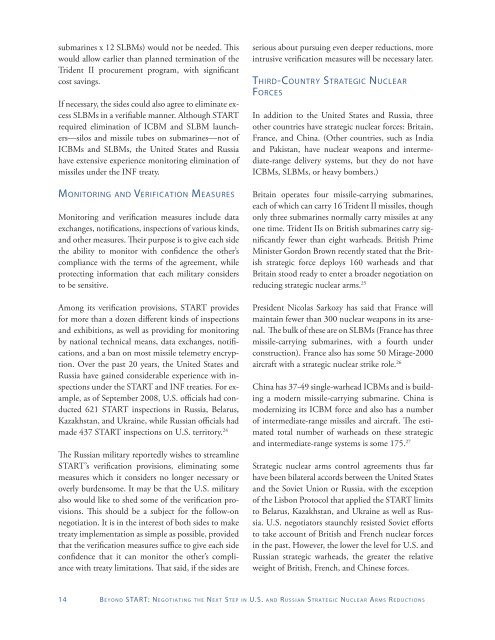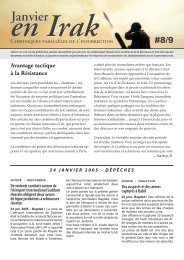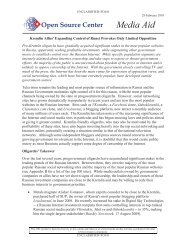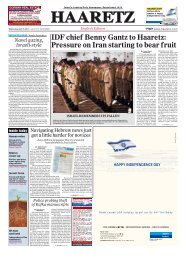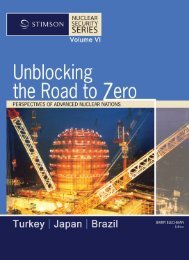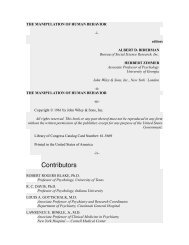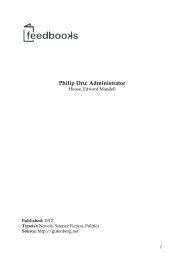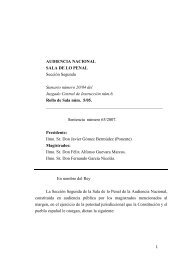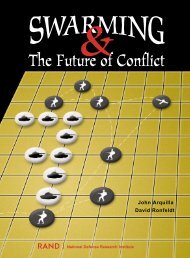Beyond START - Brookings Institution
Beyond START - Brookings Institution
Beyond START - Brookings Institution
Create successful ePaper yourself
Turn your PDF publications into a flip-book with our unique Google optimized e-Paper software.
submarines x 12 SLBMs) would not be needed. Thiswould allow earlier than planned termination of theTrident II procurement program, with significantcost savings.If necessary, the sides could also agree to eliminate excessSLBMs in a verifiable manner. Although <strong>START</strong>required elimination of ICBM and SLBM launchers—silosand missile tubes on submarines—not ofICBMs and SLBMs, the United States and Russiahave extensive experience monitoring elimination ofmissiles under the INF treaty.Monitoring and Verification MeasuresMonitoring and verification measures include dataexchanges, notifications, inspections of various kinds,and other measures. Their purpose is to give each sidethe ability to monitor with confidence the other’scompliance with the terms of the agreement, whileprotecting information that each military considersto be sensitive.Among its verification provisions, <strong>START</strong> providesfor more than a dozen different kinds of inspectionsand exhibitions, as well as providing for monitoringby national technical means, data exchanges, notifications,and a ban on most missile telemetry encryption.Over the past 20 years, the United States andRussia have gained considerable experience with inspectionsunder the <strong>START</strong> and INF treaties. For example,as of September 2008, U.S. officials had conducted621 <strong>START</strong> inspections in Russia, Belarus,Kazakhstan, and Ukraine, while Russian officials hadmade 437 <strong>START</strong> inspections on U.S. territory. 24The Russian military reportedly wishes to streamline<strong>START</strong>’s verification provisions, eliminating somemeasures which it considers no longer necessary oroverly burdensome. It may be that the U.S. militaryalso would like to shed some of the verification provisions.This should be a subject for the follow-onnegotiation. It is in the interest of both sides to maketreaty implementation as simple as possible, providedthat the verification measures suffice to give each sideconfidence that it can monitor the other’s compliancewith treaty limitations. That said, if the sides areserious about pursuing even deeper reductions, moreintrusive verification measures will be necessary later.Third-Countr y Strategic NuclearForcesIn addition to the United States and Russia, threeother countries have strategic nuclear forces: Britain,France, and China. (Other countries, such as Indiaand Pakistan, have nuclear weapons and intermediate-rangedelivery systems, but they do not haveICBMs, SLBMs, or heavy bombers.)Britain operates four missile-carrying submarines,each of which can carry 16 Trident II missiles, thoughonly three submarines normally carry missiles at anyone time. Trident IIs on British submarines carry significantlyfewer than eight warheads. British PrimeMinister Gordon Brown recently stated that the Britishstrategic force deploys 160 warheads and thatBritain stood ready to enter a broader negotiation onreducing strategic nuclear arms. 25President Nicolas Sarkozy has said that France willmaintain fewer than 300 nuclear weapons in its arsenal.The bulk of these are on SLBMs (France has threemissile-carrying submarines, with a fourth underconstruction). France also has some 50 Mirage-2000aircraft with a strategic nuclear strike role. 26China has 37-49 single-warhead ICBMs and is buildinga modern missile-carrying submarine. China ismodernizing its ICBM force and also has a numberof intermediate-range missiles and aircraft. The estimatedtotal number of warheads on these strategicand intermediate-range systems is some 175. 27Strategic nuclear arms control agreements thus farhave been bilateral accords between the United Statesand the Soviet Union or Russia, with the exceptionof the Lisbon Protocol that applied the <strong>START</strong> limitsto Belarus, Kazakhstan, and Ukraine as well as Russia.U.S. negotiators staunchly resisted Soviet effortsto take account of British and French nuclear forcesin the past. However, the lower the level for U.S. andRussian strategic warheads, the greater the relativeweight of British, French, and Chinese forces.14 B e y o n d <strong>START</strong>: Negotiating the Nex t Step in U.S. and Russian Strategic Nuclear Arms Reduc t i o n s


